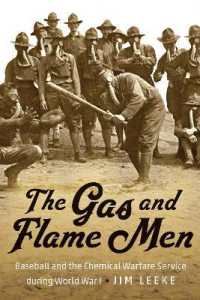基本説明
Provides a dynamic analysis of urban insecurity.
Full Description
As cities sprawl across Latin America, absorbing more and more of its people, crime and violence have become inescapable.From the paramilitary invasion of Medell!n in Colombia, the booming wealth of crack dealers in Managua, Nicaragua and police corruption in Mexico City, to the glimmers of hope in Lima, this book provides a dynamic analysis of urban insecurity. Based on new empirical evidence, interviews with local people and historical contextualization, the authors attempts to shed light on the fault-lines which have appeared in Latin American society.Neoliberal economic policy, it is argued, has intensified the gulf between elites, insulated in gated estates monitored by private security firms, and the poor, who are increasingly mistrustful of state-sponsored attempts to impose order on their slums. Rather than the current trend towards government withdrawal, the situation can only be improved by co-operation between communities and police to build new networks of trust. In the end, violence and insecurity are inseparable from social justice and democracy.
Contents
IntroductionCities, Second-Class Citizenship, and Urban Violence Urban poverty, desborde popular and the erosion of the formal social orderFrom desborde popular to desborde de la violencia : conceptualising exclusion, insecurity and violenceArmed actors and violence brokersThe politics of urban violenceParallel power and perverse integrationPart II: Rio de JaneiroIntroductionFavela-Related ViolenceImpact on EducationMotives for involvement in drug-tradingPolice and Community - Negative DialoguesPolitical-Administrative ConstraintsPolice Oversight and the Lack of Political Will - Costs and ConsequencesConclusionsPart III: Mexico CityViolence as fact and phantomMetropolitan structure and security governancePatterns and actors of insecurity and violenceGovernmental and societal responses and strategiesConclusionsPart IV: Medelli.History of urban violence in MedellinDaily life under guerrillas and paramilitariesA promising peace process with paramilitariesConcluding remarksPart V: ManaguaIntroductionBarrio Luis Fanor Hern ndez: Past and PresentDrugs, material wealth, and conspicuous consumptionConsumption, cultural exclusion, and predationViolence and primitive accumulationConclusionPart VI: CaracasDivided CaracasThe advent of violence in CaracasForms of violenceFear as an urban sentimentThe loss of the cityDemocracy and violence in the cityPart VII: Lima MetropolitanaCity of informalesNew social actors and new forms of popular organisationLow-Intensity ViolenceConclusionPart VII:Living in Fear: How the Urban Poor Perceive Violence, Fear and InsecurityCathy McIlwaine and Caroline O.N. MoserThe Diversity and Complexity of Violence among the Urban PoorUrban Poor Constructions of Fear: Social Fragmentation and Spatial RestrictionsThe Legitimization of Violence among the Urban Poor I: The Emergence of Perverse Social OrganizationsThe Legitimization of Violence among the Urban Poor II: Inadequate State Security and Judicial ProtectionNon-violent Coping: a Gendered ResponseConclusionsEpilogue: Latin America's Urban Duality RevisitedBibliographyIndex







